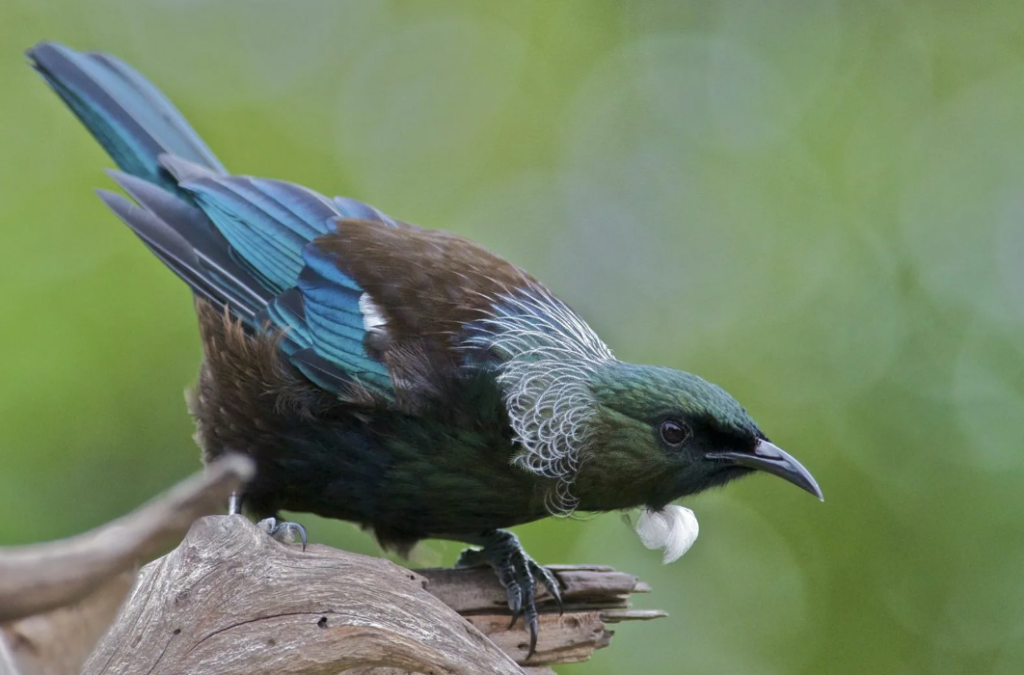Introducing the fascinating Tui, also known as Prosthemadera novaeseelandiae, an exceptional bird species that calls New Zealand’s stunning scenery home. Join me as we delve into the captivating qualities that have made this avian creature an iconic representation of the country.

A Lively Showcase of Feathers:
The Tui is well-known for its shimmering and eye-catching plumage. With its glossy black feathers, metallic blue-green patches, and striking white neck feathers, it’s no wonder why the Tui is considered a living work of art.
The Maestro of Music:
Get ready to be captivated by the Tui’s enchanting vocal skills. Their songs are a beautiful blend of various pitches, melodies, trills, and even imitations of other bird species. The Tui’s enchanting calls echo throughout the forests of New Zealand, adding a unique sound to the country’s natural soundtrack.

Staying Healthy through Diet:
Tuis play an important role in pollination for local flowering plants due to their nectarivore nature. Along with nectar, they also consume flying insects, proving that they are able to adapt to an omnivorous diet.
Aerial Experts:
Watching a Tui in flight is a sight to behold as they show off their impressive acrobatic skills. With graceful dives and skilled maneuvers, these birds are true masters of the skies.

The Tui bird is highly valued and revered in Maori culture. It symbolizes happiness, energy, and a connection with the environment, as evidenced by its prominent appearances in traditional tales, artwork, and songs. However, the Tui faces challenges from human activities and invasive species that endanger its survival. To preserve this beloved creature’s role in the ecosystem and prevent its decline, conservation measures are critical.

In summary, the Tui bird, scientifically known as Prosthemadera novaeseelandiae, truly embodies the natural beauty and cultural significance of New Zealand. Its striking colors, captivating songs, and ecological importance make it an integral part of the country’s identity that cannot be replicated.
